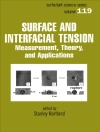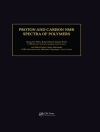The shift towards being as environmentally-friendly as possible has resulted in the need for this important volume on the topic of supercritical solvents. Edited by the leading experts in the field, Professors Walter Leitner and Phil Jessop, this is an essential resource for anyone wishing to gain an understanding of the world of green chemistry, as well as for chemists, environmental agencies and chemical engineers.
İçerik tablosu
Introduction to Supercritical Fluids
Preface
INTRODUCTION
What is a Supercritical Fluid (SCF)?
Practical Aspects of Reactions in Supercritical Fluids
The Motivation for Use of SCFs in Modern Chemical Synthesis
The History and Applications of SCFs
HIGH-PRESSURE METHODS AND EQUIPMENT
Introduction
Infrastructure for High-Pressure Experiments
High-Pressure Reactors
Auxiliary Equipment and Handling
Dosage Under a High-Pressure Regime
Further Regulations and Control in Flow Systems
Evaporation and Condensation
Complete Reactor Systems for Synthesis with SCFs
Conclusion
BASIC PHYSICAL PROPERTIES, PHASE BEHAVIOR AND SOLUBILITY
Introduction
Basic Physical Properties of Supercritical Fluids
Phase Behavior in High-Pressure Systems
Factors Affecting Solubiliy in Supercritical Fluids
EXPANDED LIQUID PHASES IN CATALYSIS: GAS-EXPANDED LIQUIDS AND LIQUID-SUPERCRITICAL FLUID BIPHASIC SYSTEMS
A Practical Classification of Biphasic Systems Consisting of Liquids and Compressed Gases for Multiphase Catalysis
Physical Properties of Expanded Liquid Phases
Chemisorption of Gases in Liquids and their Use for Synthesis and Catalysis
Using Gas-Expanded Liquids for Catalysis
Why Perform Liquid-SCF Biphasic Reactions?
Biphasic Liquid-SCF Systems
Biphasic Reactions in Emulsions
SYNTHETIC ORGANIC CHEMISTRY IN SUPERCRITICAL FLUIDS
Introduction
Hydrogenation in Supercritical Fluids
Hydroformylation and Related Reactions in Supercritical Fluids
Oxidation Reactions in Supercritical Fluids
Palladium-Mediated Coupling Reactions in Supercritical Fluids
Miscellaneous Catalytic Reactions in Supercritical Fluids
Cycloaddition Reactions in Supercritical Fluids
Photochemical Reactions in Supercritical Fluids
Radical Reactions in Supercritical Fluids
Biotransformations in Supercritical Fluids
Conclusion
HETEROGENEOUS CATALYSIS
Introduction and Scope
General Aspects of Heterogeneous Catalysis in SCFs and GXLs
Selected Examples of Heterogeneously Catalyzed Conversions in SCFs and GXLs
Outlook
ENZYMATIC CATALYSIS
Enzymes in Non-Aqueous Environments
Supercritical Fluids for Enzyme Catalysis
Enzymatic Reactions in Supercritical Fluids
Reaction Parameters in Supercritical Biocatalysis
Stabilized Enzymes for Supercritical Biocatalysis
Enzymatic Catalysis in l L-sc CO2 Biphasic Systems
Future Trends
POLYMERIZATION IN SUPERCRITICAL CARBON DIOXIDE
General Aspects
Polymerization in sc CO2
Conclusion
SYNTHESIS OF NANOMATERIALS
Introduction
Metal and Semiconductor Nanocrystals
Metal Oxide Nanoparticles
Carbon Nanomaterials
Nanocomposites
Conclusion
PHOTOCHEMICAL AND PHOTO-INDUCED REACTIONS IN SUPERCRITICAL FLUID SOLVENTS
Introduction
Photochemical Reactions in Supercritical Fluid Solvents
Photo-Initiated Radical Chain Reactions in Supercritical Fluid Solvents
Conclusion
ELECTROCHEMICAL REACTIONS
Introduction
Electrochemical Methods
Analytes
Electrolytes
Electrochemical Cell and Supercritical Fluid Delivery System
Electrodes
Solvents
Applications
Conclusion and Outlook
COUPLING REAGENTS AND SEPARATION IN TUNABLE FLUIDS: PHASE TRANSFER-CATALYSIS AND ACID-CATALYZED REACTIONS
Introduction
Phase Transfer Catalysis
Near-Critical Water
Alkylcarbonic Acids
Conclusion
CHEMISTRY IN NEAR- AND SUPERCRITICAL WATER
Introduction
Properties
Synthesis Reactions
Biomass Conversion
Supercritical Water Oxidation (SCWO)
Inorganic Compounds in NSCW
Conclusion
Future Trends
Yazar hakkında
Series Editor:
Paul T. Anastas joined Yale University as Professor and iserves as the Director of the Center for Green Chemistry and Green Engineering at Yale. From 2004-2006, Paul Anastas has been the Director of the Green Chemistry Institute in Washington, D.C. Until June of 2004 he served as Assistant Director for Environment at e White House Office of Science and Technology Policy where his responsibilities included a wide range of environmental science issues including furthering international public-private cooperation in areas of Science for Sustainability such as Green Chemistry. In 1991, he established the industry-government-university partnership Green Chemistry Program, which was expanded to include basic research, and the Presidential Green Chemistry Challenge Awards. He has published and edited several books in the field of Green Chemistry and is one of the inventors of the 12 principles of Green Chemistry.
Volume Editors:
Philip Jessop is the Canada Research Chair of Green Chemistry at Queen’s University in Kingston, Ontario, Canada. After his Ph.D. (Inorganic Chemistry, UBC, 1991) and a postdoctoral appointment at the University of Toronto, he took a contract research position in the Research Development Corp. of Japan under the supervision of Ryoji Noyori, investigating reactions in supercritical CO2. As a professor at the University of California-Davis (1996-2003) and then at Queen’s University, he has studied green solvents, the conversion of CO2 to useful products, and aspects of H2 chemistry. He has presented popular chemistry shows to thousands of members of the public. Distinctions include the Canadien Catalysis Lectureship Award (2004), a Canada Research Chair (2003 to present), and the NSERC Polanyi Award (2008). He has chaired the 2007 CHEMRAWN and ICCDU Conference on Green Chemistry, and serves as Technical Director of Green Centre Canada.
Walter Leitner was born in 1963. He obtained his Ph.D. with Prof. Henri Brunner at Regensburg University in 1989 and was a Postdoctoral Fellow with Prof. John M. Brown at the University of Oxford. After research within the Max-Planck-Society under the mentorship of Profs. Eckhard Dinjus (Jena) and Manfred T. Reetz (Mulheim), he was appointed Chair of Technical Chemistry and Petrochemistry at RWTH Aachen University in 2002 as successor to Prof. Willi Keim. Walter Leitner is External Scientific Member of the Max-Planck-Institut fur Kohlenforschung and Scientific Director of CAT, the joint Catalysis Research Center of RWTH Aachen and the Bayer Company.
His research interests are the molecular and reaction engineering principles of catalysis as a fundamental science and key technology for Green Chemistry. In particular, this includes the development and synthetic application of organometallic catalysts and the use of alternative reaction media, especially supercritical carbon dioxide, in multiphase catalysis. Walter Leitner has published more than 170 publications in this field and co-edited among others the first edition of ‘Synthesis using Supercritical Fluids’ and the handbook on ‘Multiphase Homogeneous Catalysis’. Since 2004, he serves as the Scientific Editor of the Journal ‘Green Chemistry’ published by the Royal Society of Chemistry. The research of his team has been recognized with several awards including the Gerhard-Hess-Award of the German Science Foundation (1997), the Otto-Roelen-Medal of Dechema (2001), and the Wohler-Award of the German Chemical Society (2009).












